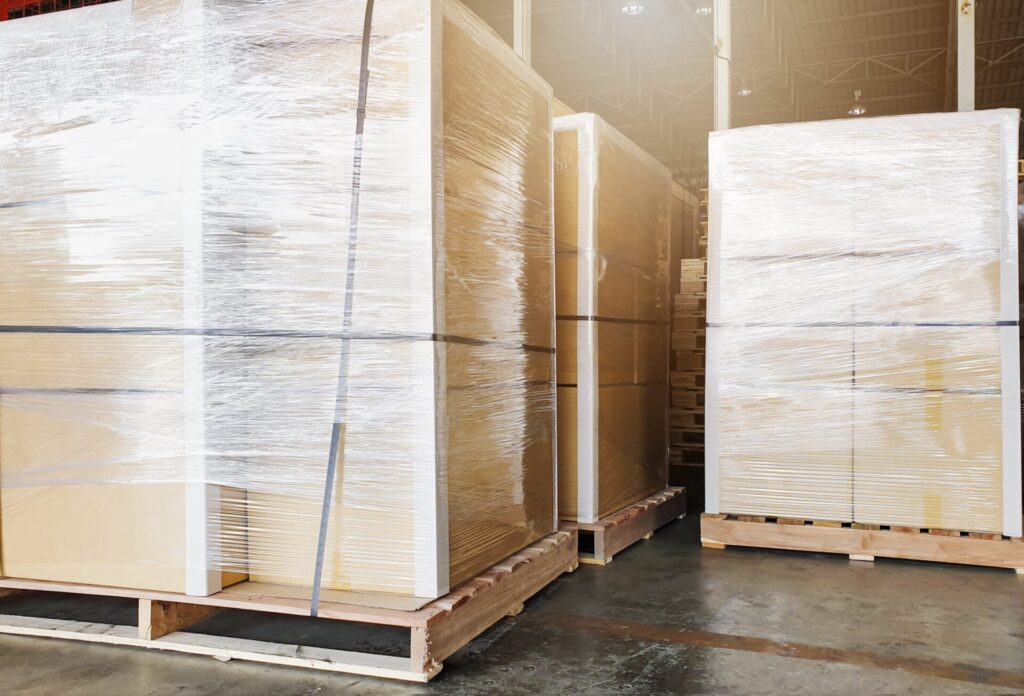
How to Prepare a Bill of Lading for LTL Freight
Less Than Truckload (LTL) shipping can be a cost-effective way to move moderate amounts of freight without paying for a full truck, but it comes with its own set of rules and documentation requirements. Chief among them is the Bill of Lading (BOL)—the legal contract between the shipper and the carrier. A properly completed BOL ensures accurate billing, timely delivery, and clear accountability if anything goes wrong.
Whether you’re an experienced logistics professional or just stepping into the world of LTL freight, understanding how to prepare a Bill of Lading is a must. In this comprehensive guide, we’ll break down every essential component of the BOL, from listing shipment details to clarifying payment terms. By the end, you’ll be able to confidently prepare this critical document, sidestepping costly errors and potential delivery delays.
Introduction to the Bill of Lading (BOL)
Why the BOL Is Crucial for LTL Shipments
The Bill of Lading serves as a physical (or digital) record of what’s being shipped, how much it weighs, who’s sending it, and who’s on the receiving end. It’s like a plane ticket for your goods—without it, your LTL shipment is missing a “passport” that validates its journey through multiple handling points.
- Legal Evidence: Proves the terms agreed upon with the carrier.
- Financial Documentation: Helps define billing responsibilities (prepaid, collect, or third-party).
- Operational Guide: Instructs carriers on handling and routing specifics.
Legal and Financial Implications
By signing the BOL, all parties acknowledge the stated details—weight, freight class, and consignment—are accurate. If the details are off, the carrier can reclassify or reweigh your shipment, often resulting in higher costs. Should a shipment go missing or arrive damaged, the BOL also serves as the foundation for insurance claims and liability disputes.
Understanding Basic Terminology
Shipper, Consignee, and Carrier
- Shipper: The individual or company sending the goods. Sometimes known as the consignor.
- Consignee: The receiver or the final destination for the goods.
- Carrier: The LTL trucking company physically transporting your shipment.
Having the correct shipper and consignee information is crucial for tracking, billing, and ensuring the freight reaches the right hands.
Freight Class, NMFC Code, and Weight
- Freight Class: A standardized system (ranging from Class 50 to 500) primarily based on product density, handling requirements, and liability risks.
- NMFC Code: The National Motor Freight Classification code, which helps carriers identify specific goods.
- Weight: Usually given in pounds, including all packaging or pallets.
Incorrect or incomplete info here can lead to reclassification fees or billing discrepancies.
Key Components of a BOL
Essential Sections and Fields
A typical BOL includes:
- Names and Addresses: Shipper and consignee details, often with phone numbers.
- Bill-To Information: Who is responsible for freight charges—shipper, consignee, or a third party.
- Date of Shipment: Helpful for record-keeping and tracking.
- Description of Goods: The item name, freight class, NMFC code, piece count, and weight.
- Special Instructions: E.g., “Needs liftgate,” “Call before delivery,” or “Fragile—do not stack.”
Paper vs. Electronic BOL
- Paper BOL: The traditional method, physically handed to the driver. You’ll typically print multiple copies for the carrier, consignee, and your own records.
- Electronic BOL (eBOL): Growing in popularity due to increased accuracy and efficiency. Both parties can sign digitally, and data flows automatically into carrier systems.
The choice often depends on your carrier’s technology setup and your own preference or ERP (Enterprise Resource Planning) system integration.
Gathering Shipment Details
Proper Weight and Dimensions
Before listing anything on your BOL, gather your shipment data accurately:
- Use a Calibrated Scale: This prevents reweigh fees.
- Measure Dimensions: If your product’s dimensions push it into a new freight class or additional surcharges, you’ll want to know.
Packaging and Pallet Count
- Number of Pallets: Group boxes or items on pallets for easier handling; note the total pallet count.
- Packaging Materials: Remember to include crates, shrink wrap, or dunnage in your total weight calculation.
- Fragile or Bulky: If items are easily breakable or extra wide/tall, denote this under “Special Instructions.”
Determining Freight Class and NMFC Code
Common Mistakes in Classification
- Guessing the Class: Without referencing official resources or confirming with the carrier, you risk billing adjustments later.
- Ignoring Density: Freight class is heavily influenced by how much space your cargo occupies relative to its weight.
- Misrepresenting Commodity: Certain hazardous or high-value goods must be clearly identified, which can change their classification.
Resources for Correct Classification
- NMFTA Guide: The National Motor Freight Traffic Association publishes guidelines.
- Carrier Websites: Many LTL carriers offer online calculators or classification tools.
- Logistics Brokers: Third-party logistics providers often handle classification for you, but verifying details remains wise.

Listing Shipper and Consignee Information
Contact Details and Addresses
Precision is key to avoid delivery mistakes:
- Full Legal Names: Matches what’s on any invoicing or business registration.
- Street Addresses: Include suite or building numbers where applicable.
- Phone and Email: Carriers often need these for scheduling or clarifying issues.
Special Instructions and Hours of Operation
- Operating Hours: If a consignee accepts deliveries only from 9:00 am to 3:00 pm, let the carrier know.
- Limited Access Notes: If your consignee is located in a residential area, school campus, or military base, mention it to avoid extra fees or refused deliveries.
Mentioning Third-Party Billing (If Applicable)
How Payment Responsibilities Affect the BOL
The BOL must clarify who pays for shipping:
- Prepaid: Shipper covers the cost.
- Collect: Consignee pays upon delivery.
- Third-Party: Another company (e.g., a vendor or a 3PL) is responsible for charges.
Importance of Accurate Billing Details
Include all relevant contact information for the entity paying the bill. If a third-party logistics provider or separate billing department is involved, specify addresses and phone numbers to avoid confusion. Any misstep could lead to delayed payment or billing disputes that escalate into bigger problems.
Noting Accessorial Services
Liftgate, Inside Delivery, and More
Accessorials are add-on services that carriers charge extra for:
- Liftgate Service: Needed if no dock or forklift is available for loading/unloading.
- Inside Delivery: Driver moves freight beyond the loading dock or inside a building.
- Residential or Limited Access: Additional charges apply if delivering to locations like schools, farms, or military bases.
- Appointment Scheduling: Some receivers require a call-ahead or scheduled delivery window.
Why Transparency Prevents Hidden Fees
Disclosing these needs up front ensures the carrier arrives with the right equipment and your invoice matches your budget. If you omit relevant info, carriers can tack on extra charges, or your shipment might face unexpected delays.
Specifying Hazmat or Special-Handling Instructions
Legal Requirements for Hazardous Materials
If your freight contains hazardous materials, you must comply with Department of Transportation (DOT) regulations. This means:
- Proper Labeling: Use the correct hazmat placards.
- Emergency Contact: List a phone number for 24/7 incident response.
- Shipping Papers: Additional documentation might be required besides the BOL.
Proper Labeling and Documentation
For non-hazmat cargo that’s still delicate, mark instructions such as “Fragile,” “Do Not Stack,” or “Keep Upright.” While carriers won’t always guarantee gentle handling, clear instructions raise awareness, potentially reducing damage risk.
Including a Pro Number or Reference
Carrier-Assigned Numbers and Their Importance
Many carriers issue a Pro Number—a unique ID that helps track your freight. If you have that number before pickup, note it on the BOL. Alternatively, you can generate your own reference (like a PO or invoice number).
- Visibility: Carriers use this number to log updates in their tracking systems.
- Cross-Reference: Helps match your BOL to the carrier’s freight bill or invoice later.
Tracking and Tracing Your Shipment
Once your goods are in transit, the Pro Number or reference ID is crucial for:
- Online Tracking: Most carriers allow you to enter this ID on their website to see ETA and location.
- Customer Service: If you need to call the carrier, providing the Pro Number speeds up assistance.

Reviewing the Terms and Conditions
Carrier Liability and Limits
Carriers typically limit liability based on a per-pound valuation unless you declare a higher value or buy extra insurance. If you’re shipping high-value goods, check:
- Carrier’s Standard Coverage: This might not fully cover your loss if something goes wrong.
- Declared Value: You can often specify a higher declared value on the BOL, potentially with an extra fee.
- Insurance Options: Third-party providers or the carrier’s own insurance program.
Governing Tariffs and Rules
Your shipment is subject to the carrier’s tariff—essentially their internal rulebook. This document outlines:
- Rates and Charges: For reweighs, reclassifications, and accessorials.
- Claims Procedures: How to file if cargo is damaged or lost.
- Storage Fees: If freight remains unclaimed or the consignee is unavailable.
A quick read or discussion with your carrier helps you avoid unpleasant surprises later.
Signing and Dating the BOL
Shipper and Carrier Signatures
The BOL isn’t valid until both the shipper and the carrier sign, acknowledging the details are correct:
- Driver Signature: Confirms receipt of the freight in apparent good condition.
- Shipper Signature: Verifies the info on the BOL is accurate to the best of their knowledge.
Legal Consequences of a Signed Document
Once signed, the BOL becomes a binding contract. If your figures are wrong or you omitted crucial details, the carrier can hold you accountable. Similarly, if the carrier damages goods during transit, your BOL helps you prove the cargo left your dock in good order, strengthening any claim you need to file.
Keeping Copies and Records
Why You Need Multiple BOL Copies
At minimum, you should have:
- Shipper Copy: For your internal records.
- Driver Copy: The carrier keeps this on file.
- Destination Copy: The receiver uses this for verification upon delivery.
Accidents happen in transit—lost paperwork, confusion about addresses—so having multiple copies of the BOL serves as insurance that someone has the right info at each stage.
Storing Electronic vs. Paper Documentation
Paper documents can get misplaced. If your operation allows, consider:
- Digital Scans or Photos: Store them in a cloud-based drive or TMS (Transportation Management System).
- Electronic Workflow: eBOL platforms automatically share copies between you, the carrier, and the consignee.
The key is easy retrieval. In a damage claim or billing dispute, quick access to the signed BOL can save you time and money.
Common Pitfalls to Avoid
Incorrect Weight or Class
Carriers frequently reweigh or reclassify shipments if they suspect misreporting. Avoid add-on fees by:
- Using Accurate Scales: Don’t guess the weight.
- Verifying Class: If you’re uncertain about freight class, consult a resource or the carrier.
Omitting Accessorials or Special Notes
Forget to mention that you need a liftgate or that your customer is in a remote location? Expect unanticipated charges and possibly a delayed delivery. Transparency up front is simpler and cheaper than sorting out conflicts later.
Step-by-Step BOL Preparation Recap
Let’s consolidate the process:
- Gather Shipment Data: Weigh and measure your cargo accurately, including packaging.
- Confirm Freight Class & NMFC Code: Use official resources or verify with the carrier.
- List Shipper & Consignee: Full addresses, contact info, and any special delivery requirements.
- Clarify Billing Party: Prepaid, collect, or third-party.
- Note Any Accessorials: Liftgate, inside delivery, etc.
- Include Hazardous Material Details (if applicable): Follow DOT rules, label items, and provide emergency contact.
- Add Pro Number or Reference: For easy tracking.
- Review Terms & Conditions: Check carrier liability, tariffs, and insurance options.
- Sign & Date: Both shipper and driver.
- Distribute Copies: Keep one for yourself, give one to the driver, and have another for the consignee.
Conclusion
A properly filled-out Bill of Lading is more than just paperwork—it’s the backbone of any successful LTL freight shipment. From defining legal liabilities to ensuring your freight arrives at the right place, the BOL streamlines the entire transport process. Neglecting even minor details can lead to increased costs, misdeliveries, or complex disputes.
By following this guide, you’ll not only produce accurate, legally compliant BOLs but also maintain smoother relationships with carriers, reduce the likelihood of hidden fees, and protect your shipments from common pitfalls. Whether you’re handling delicate high-value items or standard retail goods, investing the time to prepare a thorough BOL pays dividends in reliability, cost savings, and peace of mind.
How useful was this post?
Click on a star to rate it!
Average rating 0 / 5. Vote count: 0
No votes so far! Be the first to rate this post.



